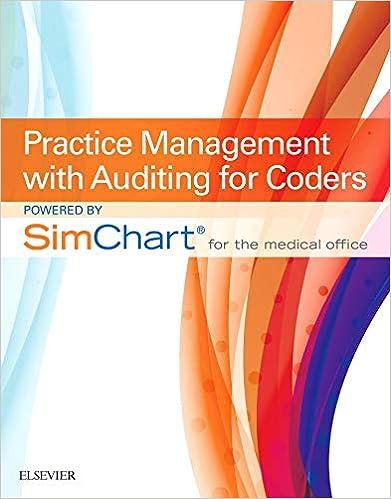Answered step by step
Verified Expert Solution
Question
1 Approved Answer
Sutcliffe Electronics, a division of Best Corporation, manufactures two large-screen television models, the Mammoth, which has been produced since 2015, and sells for $990, and


Sutcliffe Electronics, a division of Best Corporation, manufactures two large-screen television models, the Mammoth, which has been produced since 2015, and sells for $990, and the Maximum, a newer model introduced in 2016 that sells for $1,254. Based on the following income statement for the year ended November 30, 2019, senior management at Best Corporation has decided to concentrate Sutcliffe's marketing resources on the Maximum model and to begin to phase out the Mammoth model because Maximum generates a much bigger operating income per unit: Sutcliffe Electronics Income Statement for the Fiscal Year Ended November 30, 2019 Revenue Cost of Goods Sold Gross Margin Selling and Admin. Operating Income Units produced and sold Operating Income per unit Mammoth $21,780,000 13,794,000 7,986,000 6,413,000 $1,573,000 22,000 $71.50 Maximum $5,016,000 3,511,200 1,504,800 1,075,800 $429,000 4,000 $107.25 Total $26,796,000 17,305,200 9,490,800 7,488,800 2.002,000 sold Details of cost of goods sold for Mammoth and Maximum are as follows: Mammoth Maximum Total Per Unit Total Per Unit Direct Materials $5,033,600 $228.80 $2,569,600 $642.40 Direct Mfg. Labor 435,600 19.80 184,800 46.20 Machine Costs 3.484,800 158. 40 3 16.800 79.201 Total Direct Costs $8.954.000 $407.00 $3,071,200 $767.80 MOH Costs $4,840,000 $220.00 $440,000 $110.00 Total COGS $13.794,000 $627.00 $3.511.200 $877.80 Mammoth requires 1.5 hours per unit and Maximum requires 3.5 hours per unit. The direct manufacturing labor cost is $13.20 per hour. Machine costs include lease-costs of the machine, repairs, and maintenance. Mammoth requires 8 machine hours per unit and Maximum requires 4 machine-hours per unit. The machine-hour rate is $19.80 per hour. Manufacturing overhead costs are allocated to products based on machine-hours at a rate of $27.50 per hour. Total Sutcliffe's controller, Colin Hanton, is advocating the use of activity-based costing and activity-based management and has gathered the following information about the company's manufacturing overhead costs for the year ended November 30, 2019: Units of the Cost Allocation Base Allocation Center Total Activity Costs Mammoth Mammoth T Maximum (Cost Allocation Base) Soldering (number of $1,036,200 1,182,000 388,000 1,570,000 solder points Shipments (number 946,000 16,000 4,000 20,000 of shipments) Quality control 1,364,000 56,000 21,500 77,500 (number of inspections) Purchase orders 1,045,440 80,000 110,080 190,080 (number of orders) Machine power 63,360 176,000 16,000 192,000 (machine hours) Machine setups 825,000 16,300 13,700 30,000 (number of setups) Total Manufacturing $5,280,000 Overhead After completing his analysis. Hanton shows the results to Brian Epstein, the Sutcliffe division president. Epstein does not like what he sees. "If you show headquarters this analysis, they are going to ask us to phase out the Maximum line, which we have just introduced. This whole costing stuff has been a major problem for us. First Mammoth was not very profitable, and now Maximum. "Looking at the ABC analysis, I see two problems. First, we do many more activities than the ones you have listed. If you had included all activities, maybe your conclusions would be different. Second, you have used number of setups and number of inspections as allocation bases. The numbers would be different had you used set-up hours and inspection-hours instead. I know that measurement problems precluded you from using these other cost-allocation bases, but I believe you ought to make some adjustments to our current numbers to compensate for these issues. know you CMAs have a confidentiality standard in your ethics policies. Therefore the ethical thing for you do is to keep your mouth shut about doing this study. If HQ asks, tell them yo Hanton knows that his numbers are faidy, accurate. As a quick check, he calculates the profitability of Maximum and Mammoth using more and different allocation bases. The set of activities and activity rates he had used results in numbers that closely approximate those based on more detailed analyses. He is confident that headquarters, knowing the Maximum was introduced only recently, will not ask Sutcliffe to phase it out. He is also aware that a sizable portion of Epstein's bonus is based on division revenues. Phasing out either product would adversely affect his bonus. Still, he feels some pressure from Epstein to do something. Requirements: 1. Using activity-based costing, calculate the operating income per unit sold of the Maximum and Mammoth models. 2. Explain briefly why these numbers differ from the from the operating income per unit sold of the Maximum and Mammoth models calculated using Sutcliffe's existing simple-costing system. n Epstein's concerns about the accuracy and limitations of ABC. 4. How might Sutcliffe find the ABC information helpful in managing its business? 5. As an ethical accountant, what should Colin Hanton do in response to Epstein's comments
Step by Step Solution
There are 3 Steps involved in it
Step: 1

Get Instant Access to Expert-Tailored Solutions
See step-by-step solutions with expert insights and AI powered tools for academic success
Step: 2

Step: 3

Ace Your Homework with AI
Get the answers you need in no time with our AI-driven, step-by-step assistance
Get Started


